Every company that needs technical writers wants to attract the best talent.
That’s only natural—the people are a major factor in the business’s growth and success.
The first step in that process is to write a job description that catches the eye of every potential hire and leaves a strong impression.
If you’re wondering how to do that, you’re in the right place. We have the whole process of writing an effective job description for hiring technical writers laid out right here for you.
Let’s start!
Keep the Job Title Simple
We all like to see some fun and quirky job ads. They can help the company stand out and signal to potential employees that we think outside the box.
However, the job title itself is not a place to unleash your creativity.
The reason is simple, and rather self-explanatory if you put yourself in the shoes of a technical writer looking for a job on employment websites. What would you type in the search box?
Unless you’re looking for something highly specific, it would most likely be a “technical writer”.
The team from Glassdoor is straightforward about it:
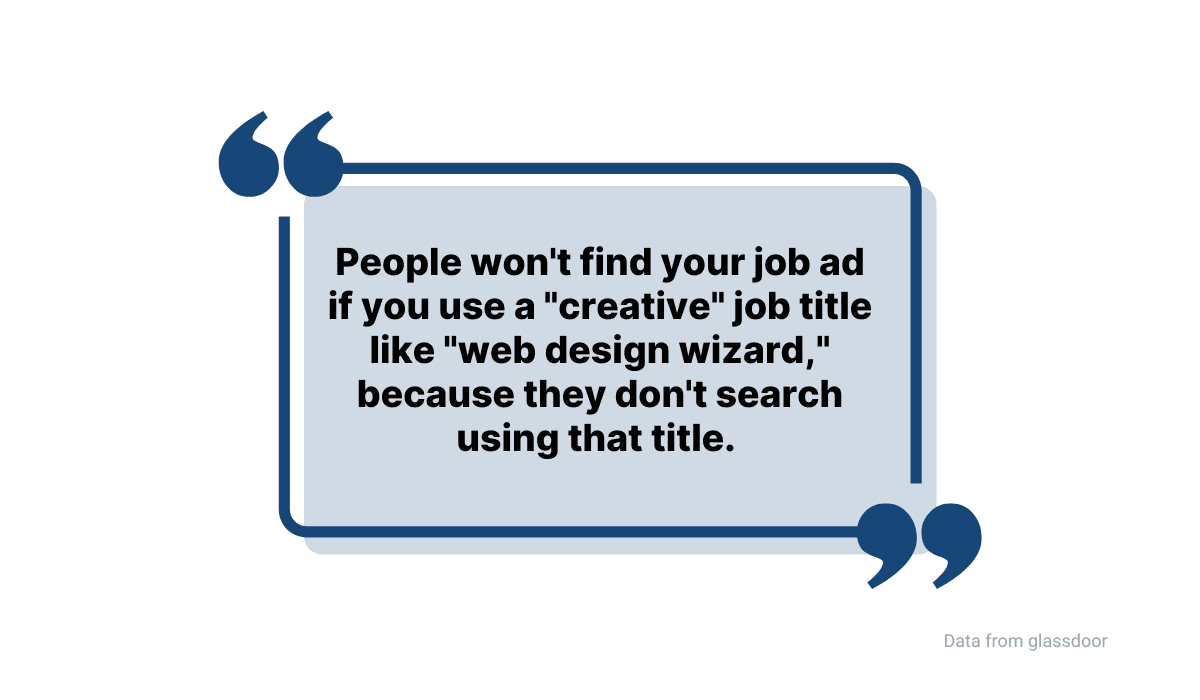
Source: Archbee
Let’s look at some data about that.
If we use Google Trends to show us the popularity of search terms related to technical writing jobs, we can see that people mostly search for the simplest ones.
For this purpose, we compared “technical writer”, “technical author”, and slightly more creative “technical writing master”.
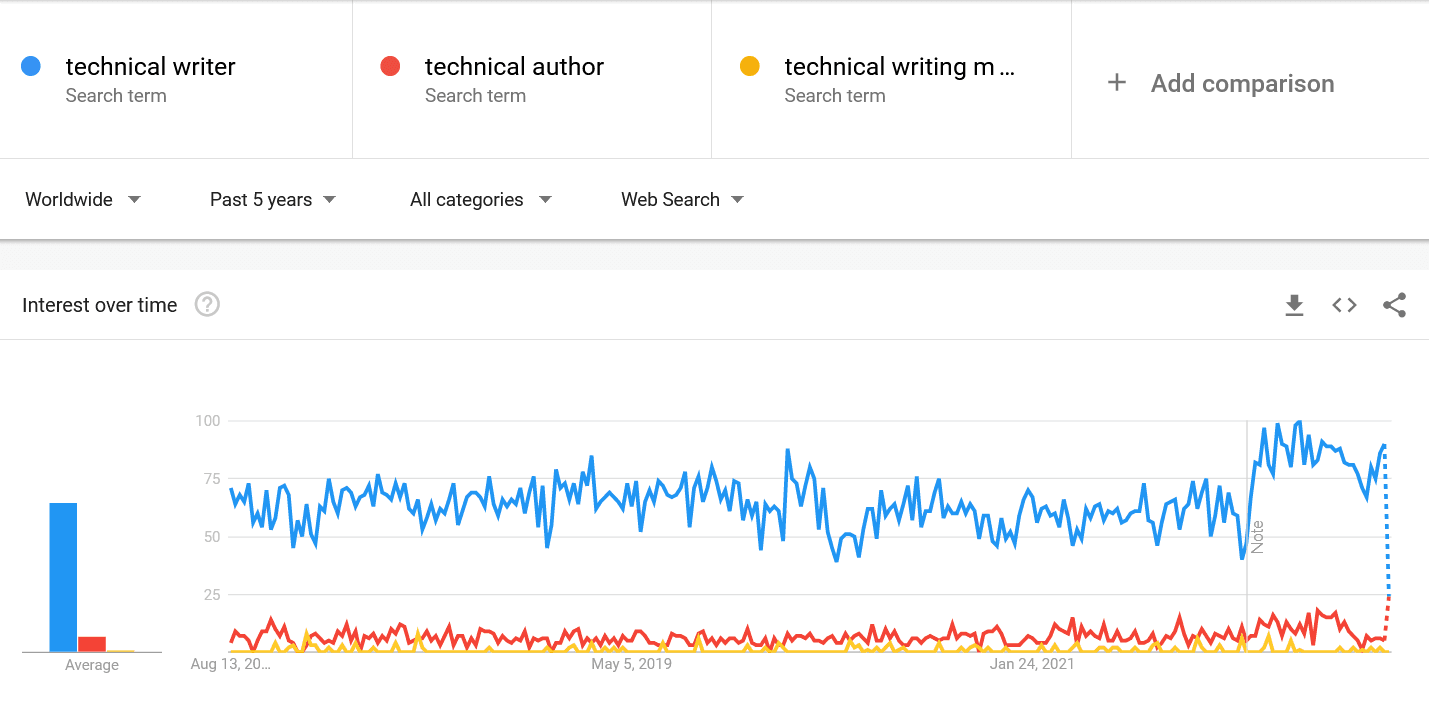
Source: trends.google
As you can see, people look up the first term much more often than the other two, which aren’t non-existent but can’t compare to the most common one in terms of search traffic.
Therefore, if you’re thinking about adding words like “guru”, “master”, or “ninja” to the job title, keep in mind that you can deter potential candidates who either won’t find your job ad or they won’t apply to it precisely because of terms like those.
Take a look at the findings from a Resume survey below.
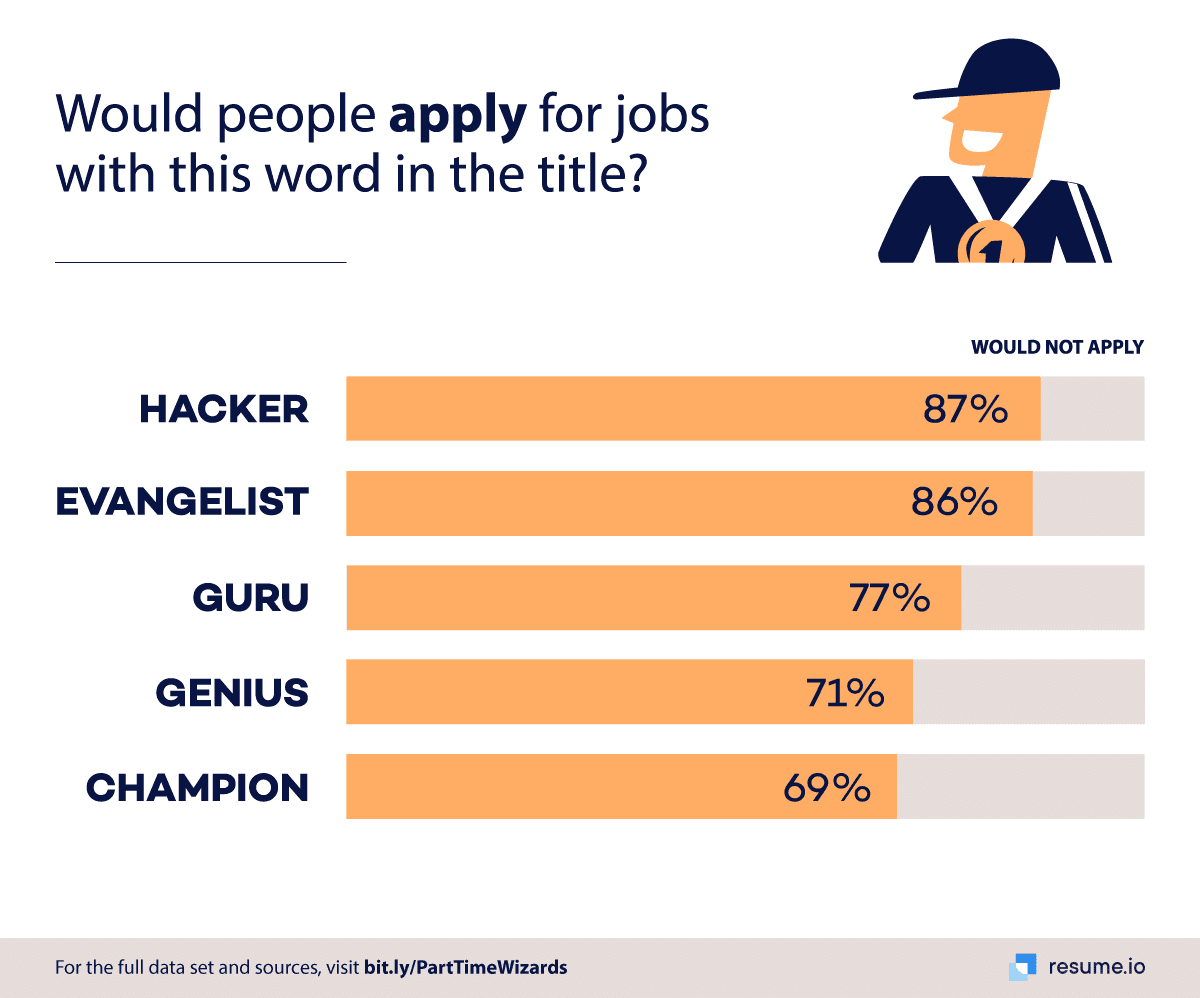
Source: resume
In short, you should keep your job titles straightforward and without any unnecessary embellishments.
After all, you want technical writers to find it with ease. That’s why this example from the Salesforce job ad is effective.
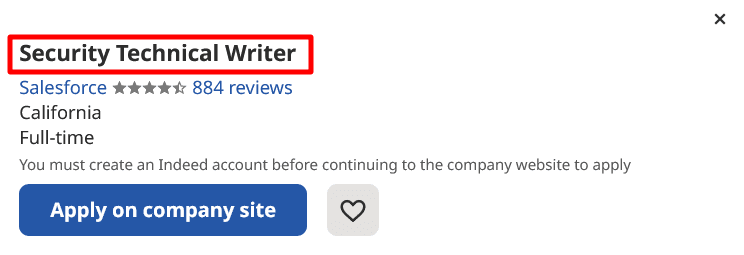
Source: Indeed
You immediately know what the job is from the title.
On the other hand, a job title like the one below can be confusing. Only when you read the whole job description can you be sure that it’s a type of technical writing position.
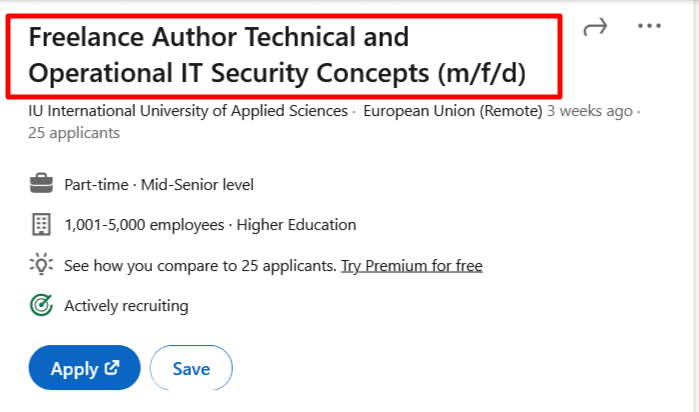
Source: LinkedIn
To sum up, it’s best not to try to reinvent the wheel when it comes to job titles.
There are exceptions, like with everything. Maybe Google can pull off a job title like Security Princess, but that doesn’t mean it’s the best practice to follow.
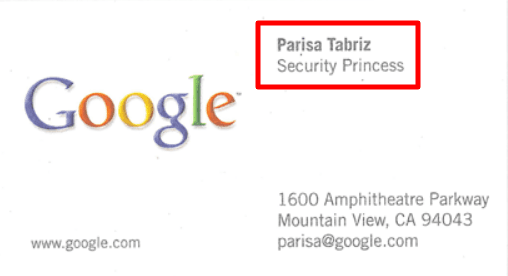
Source: drive.google
Other parts of a job description are more suitable for creativity.
One of them is a job description summary, which we’ll examine in the next section.
Provide a Job Description Summary
The first thing a job-seeker sees below the job title is usually a job description summary.
That part of the job description has several purposes, and one of the most important ones is to spark interest in the job in the candidate.
A job description should hook the reader and prevent them from moving to other job ads, and according to a study by LinkedIn, you don’t have a lot of time to do that—more precisely, 14 seconds on average.
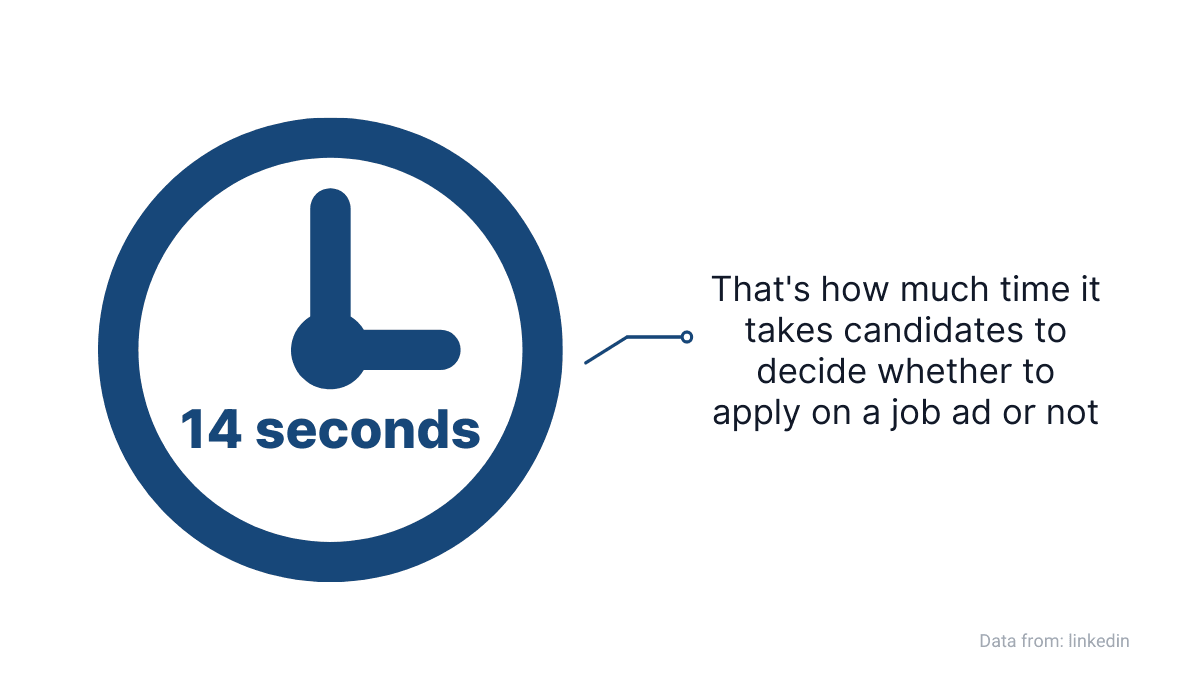
Source: Archbee
In those 14 seconds, candidates often stay near the top of the job ad, where the job description summary is.
You can see that on the heatmap below—eye-tracking software revealed that the candidates read mostly the top of the job descriptions and don’t have the patience to get to the bottom.
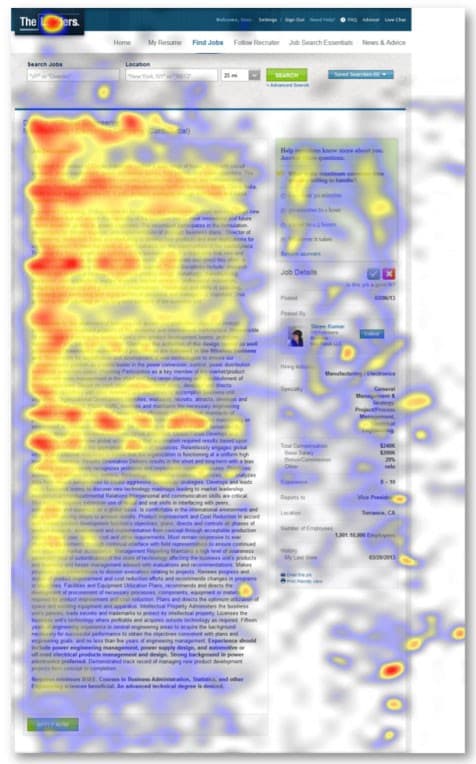
Source: LinkedIn
That means you should use the job description summary to grab a candidate’s attention, describe the job you’re offering, present its benefits, and do all that concisely.
For example, the National Center for Women & Information Technology (NCWIT) suggests using one to four sentences in which you’ll describe the job and how it contributes to the company and society.
Also, invitational language can be very effective.
Let’s look at one good example of a job description summary that follows those recommendations.
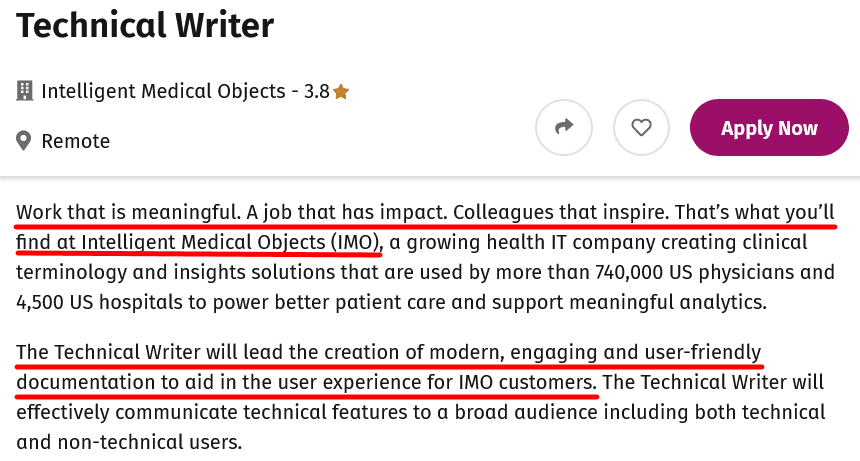
Source: simplyhired
As you can see, the summary starts with impactful sentences that aim to convey why the technical writing job at Intelligent Media Objects is attractive.
It also points out the benefits of this job to the public—the company’s customers use technical writing, and the customers are physicians and hospitals.
That way, a candidate gets the impression that they won’t be writing something disposable and meaningless—on the contrary, they might make people’s lives easier.
Here’s another example of an effective summary, this time from Amazon Web Services:
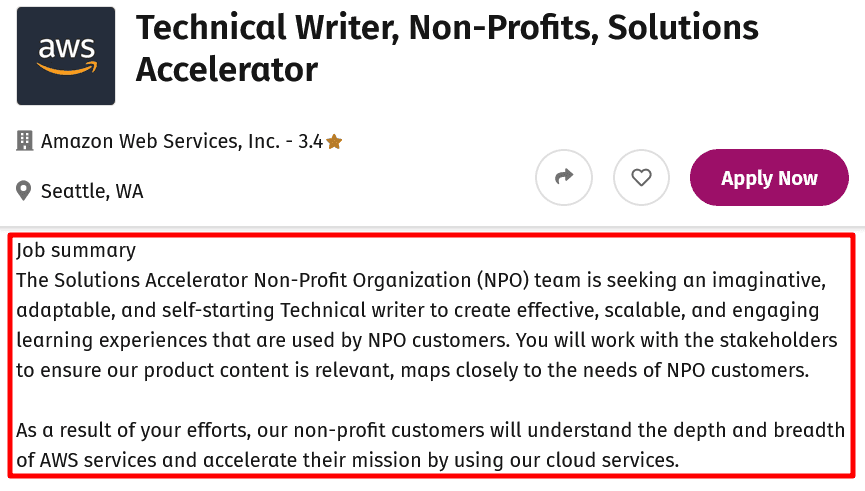
Source: simplyhired
Those are the first three sentences of a summary, and a candidate gets a lot of information from them—what they would work on, who they would work with, and what the result of their efforts would be.
In short, a job description summary is like an ad for your job ad—its purpose is to engage the reader and sell them your job listing, so they apply to it.
List Job Responsibilities
When technical writers read your job ad, they should clearly understand what their responsibilities would be if you hired them.
Listing job responsibilities provides an opportunity for you to describe the position in more detail and to the candidate to see if the tasks and duties are enticing to them.
Furthermore, the list of job responsibilities should be precisely that—a list. Writing a wall of text describing every minutia of the job isn’t necessary.
The candidate would most likely be overwhelmed, and the really important information could get lost in the text.
Don’t believe us? Take a look at the job ad for a technical writer and editor below.
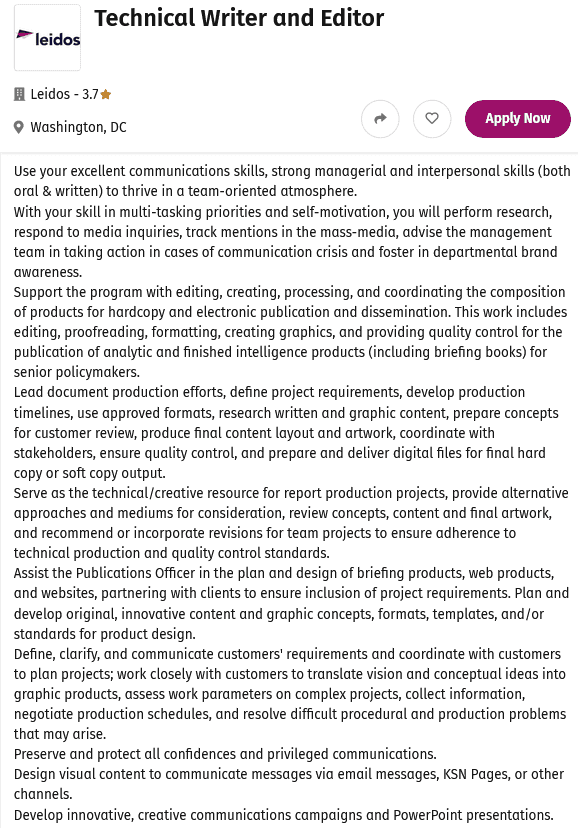
Source: simplyhired
Sure, the candidate can get a detailed picture of what the job looks like.
However, with the thousands of other job ads for technical writers competing for candidates’ attention, you need to find a way to convey responsibilities quickly and efficiently and not try to write the next great American novel.
As Colin Day, the Advisor to the CEO of a recruiting company iCIMS, puts it, you should emphasize the goals that a candidate can accomplish by working with you.

Source: Archbee
A better way to write a list of responsibilities is by forming it as a bulleted list.
Of course, you should still avoid making it overly extensive—a bulleted list with 14 items, as you can see below, isn’t much of an improvement on the example above.
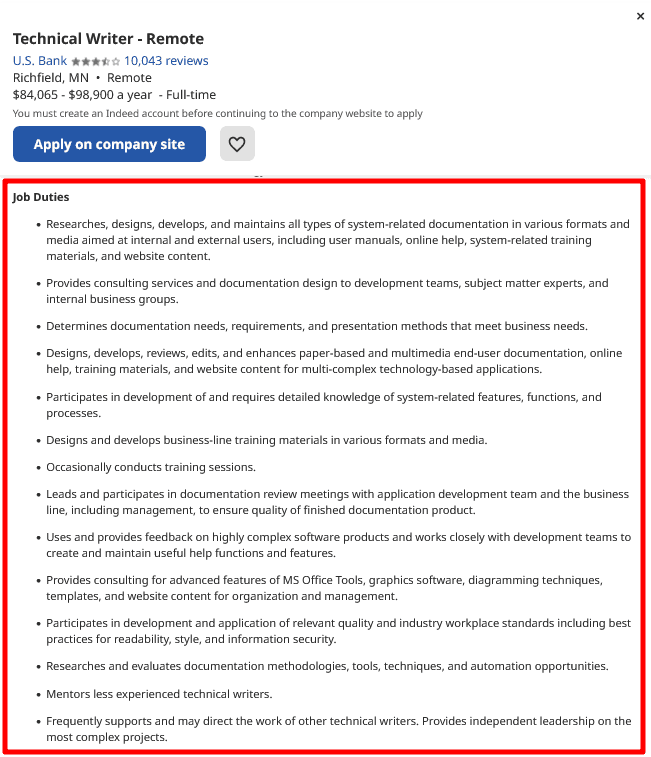
Source: Indeed
Most experts agree that a bulleted list should be concise.
For instance, NCWIT recommends having five to seven items per list.
David Barden, a technical writer and founder of Clearly Scientific, also recommends not having more than seven items. More items make a list less engaging for the reader.
What does that look like in a technical writer job description? Here’s an example from Amazon:
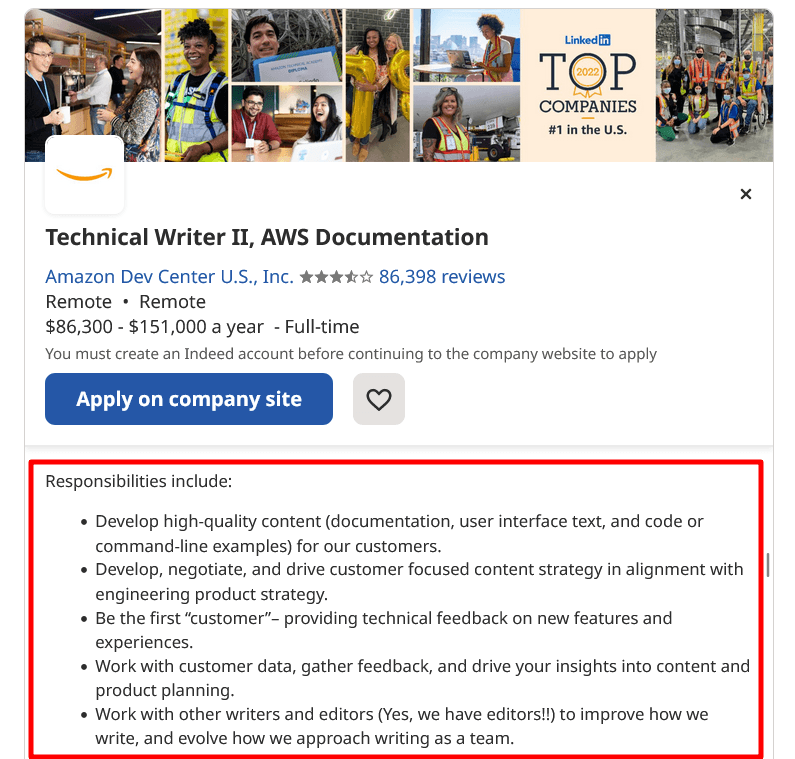
Source: Indeed
Five items emphasize goals to accomplish and don’t go into too much detail while still providing a clear picture of a job to candidates.
However, this isn’t the only list in an effective job description for technical writers. Let’s look at one more in the next section.
List Qualification Requirements
In addition to a list of job responsibilities, an effective job description should include a list of required qualifications that a technical writer must have to apply.
That list can get as extensive as you prefer.
Some employers include only hard skills like specific technical knowledge in the listed requirements, while others also put soft skills like communication and teamwork as essential.
Regardless of the specifics, including required education, certificates, and previous work experience would be advisable.
That way, you can filter out the candidates who don’t have what you deem necessary for the job.
However, you also should try not to get too specific with your qualification requirements.
Putting everything you can think of on the list can discourage potentially great candidates from applying just because they don’t meet every single requirement from the list.
The data from an Indeed survey indicates that 63% of candidates gave up at some point because of that.
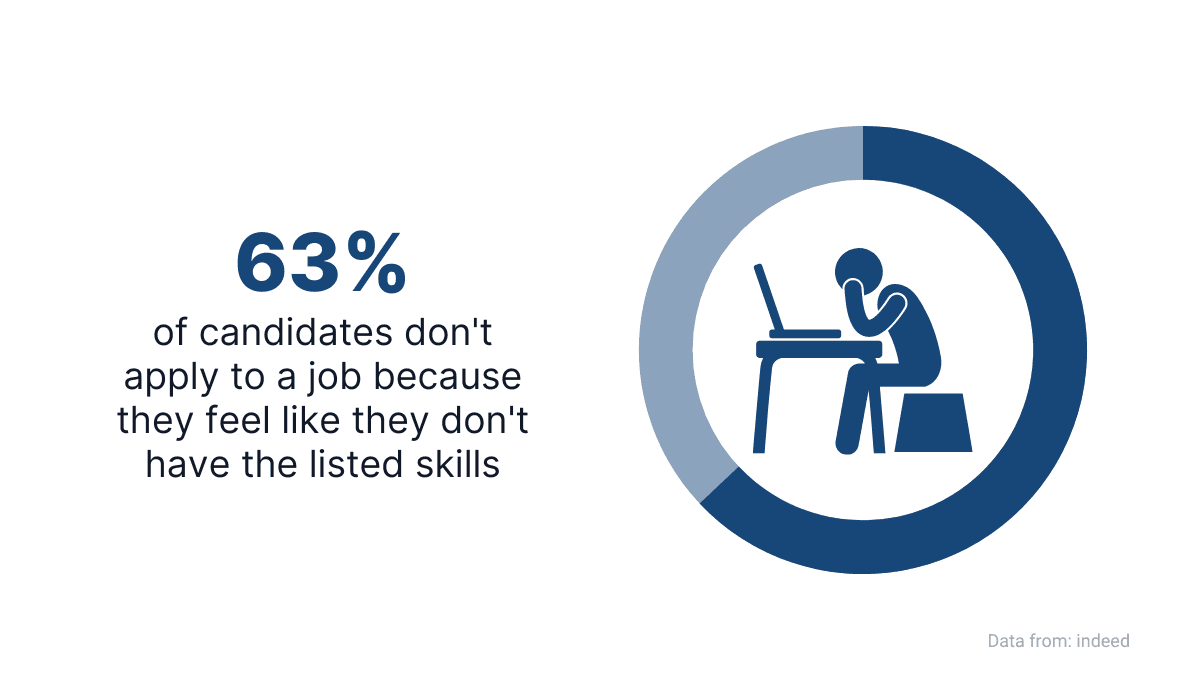
Source: Archbee
That’s why it’s better if you rank the qualification requirements by their importance.
You can do that by dividing the list into must-have and nice-to-have parts.
For example, a job description for a technical writer at Google AI Programs has a part with minimum qualifications and a part where they list their preferred qualifications.
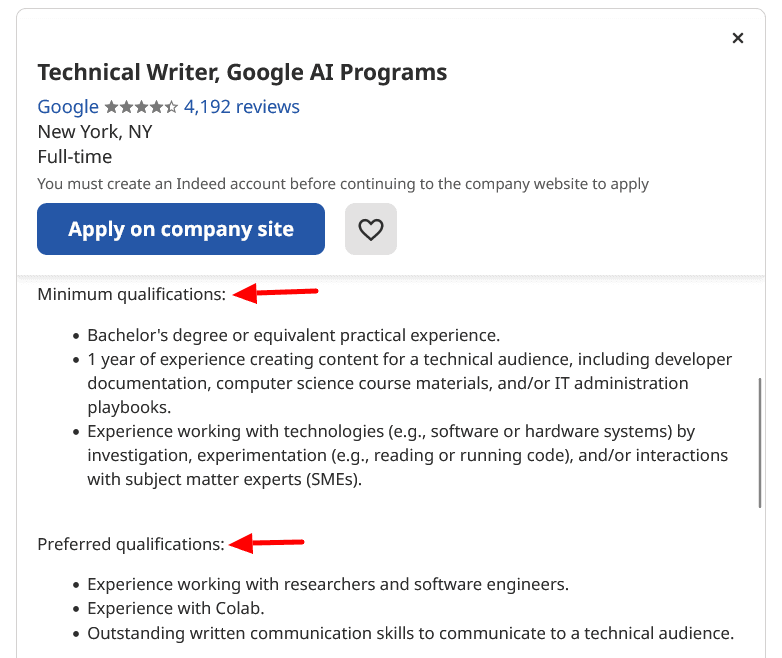
Source: Indeed
That way, you can point out to the candidates what qualifications are essential, but you won’t deter someone who could be great just because they, for instance, don’t know how to work in a program they could learn in two weeks.
Also, keep in mind that it’s best to format requirements as a bulleted list like the above. Lists are easy to read and digest, unlike the text block in the job ad below.
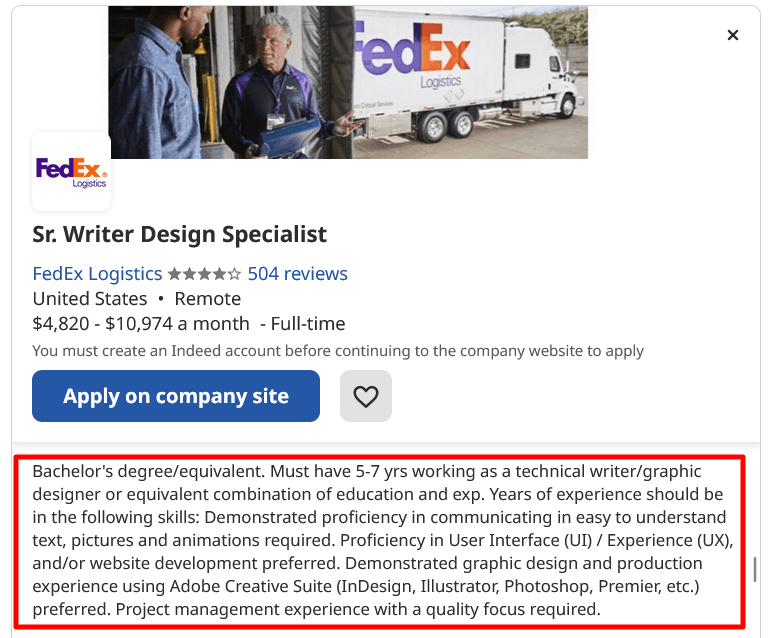
Source: Indeed
As we mentioned earlier, that list can include a range of qualifications, from education to particular skills.
One of the requirements you can include in your preferred category is experience with using modern software tools for technical writers.
For example, if your candidates know how to use Archbee, you know that they are up to date with the industry trends and value efficiency in their work.
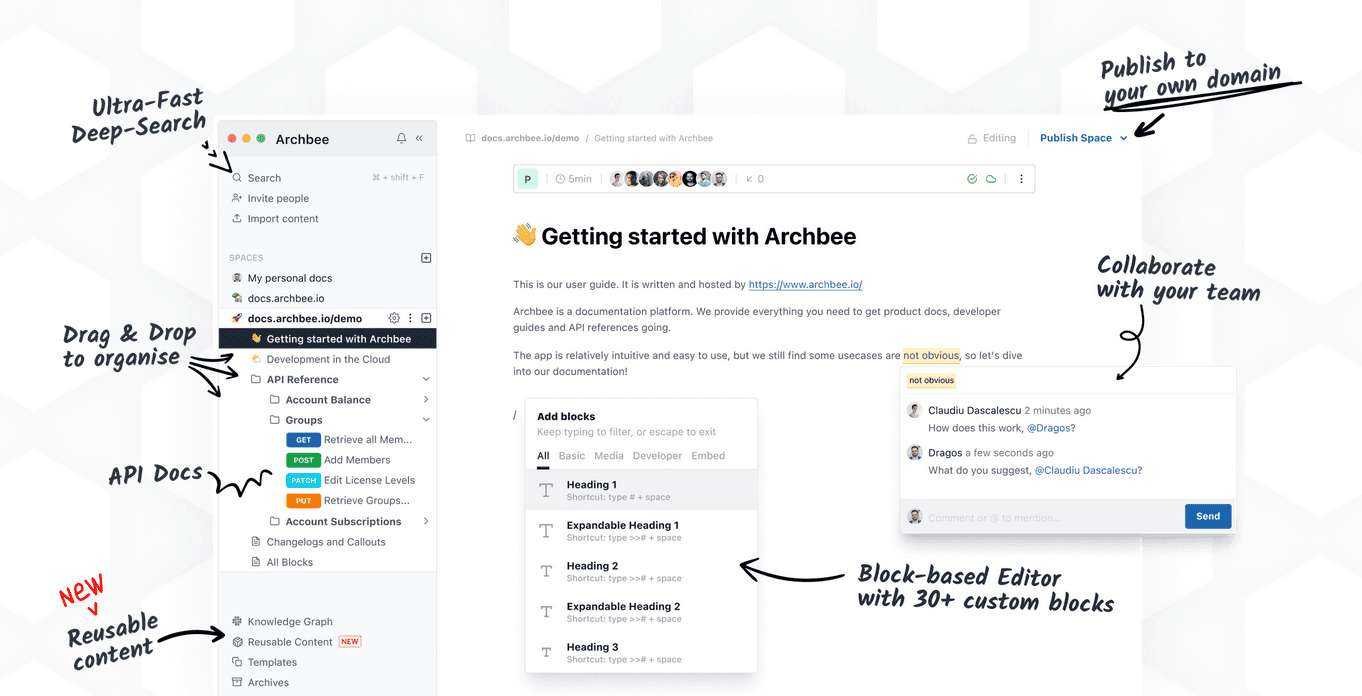
Source: Archbee
Candidates familiar with software like Archbee can be a great addition to any team—they know how to use the technology to improve the quality and quantity of their work.
But the skills, education, and experience aren’t the only things you should look for in a candidate. A job description should also include a mission statement, which we’ll examine next.
Include a Mission Statement
A mission statement is a vital part of any effective job description, and that's also true when hiring technical writers.
With a mission statement, you can present your company's values and give a glimpse into the company culture.
In combination with lists of job responsibilities and qualification requirements, having a mission statement helps technical writers decide if they are a good fit for the job.
However, unlike responsibilities and qualifications, the company's values and culture can be more abstract and prone to interpretation.
That's why it's important how well you present them in the job description because, as Justin Cerilli from Russell Reynolds Associates explains, in the end, it comes down to whether the candidate would enjoy working for your company.
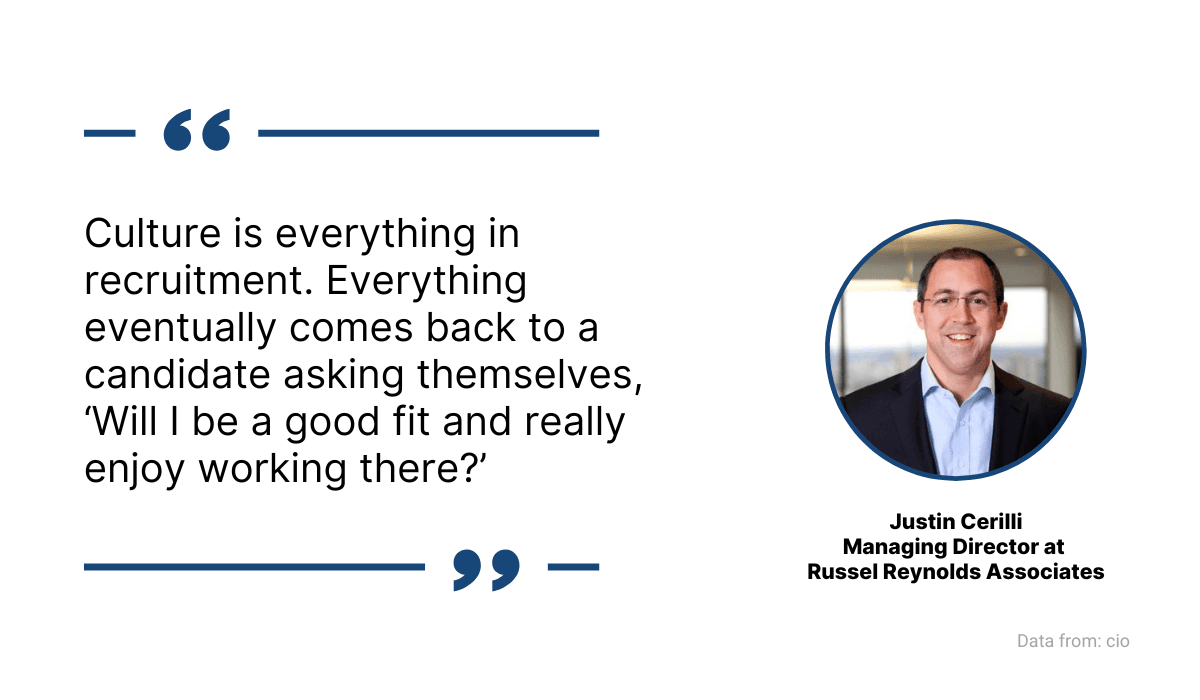
Source: Archbee
Hiring a writer who's a good culture fit can be as important, if not more, than hiring a writer with all the skills and experience.
Those can be learned and gained, while someone who doesn't share the company's values could easily be a bad hire.
And that can be costly for the company. According to the data cited on Appolo Technical, the cost of a bad hire is nearly a third of an employee's first year's wages.
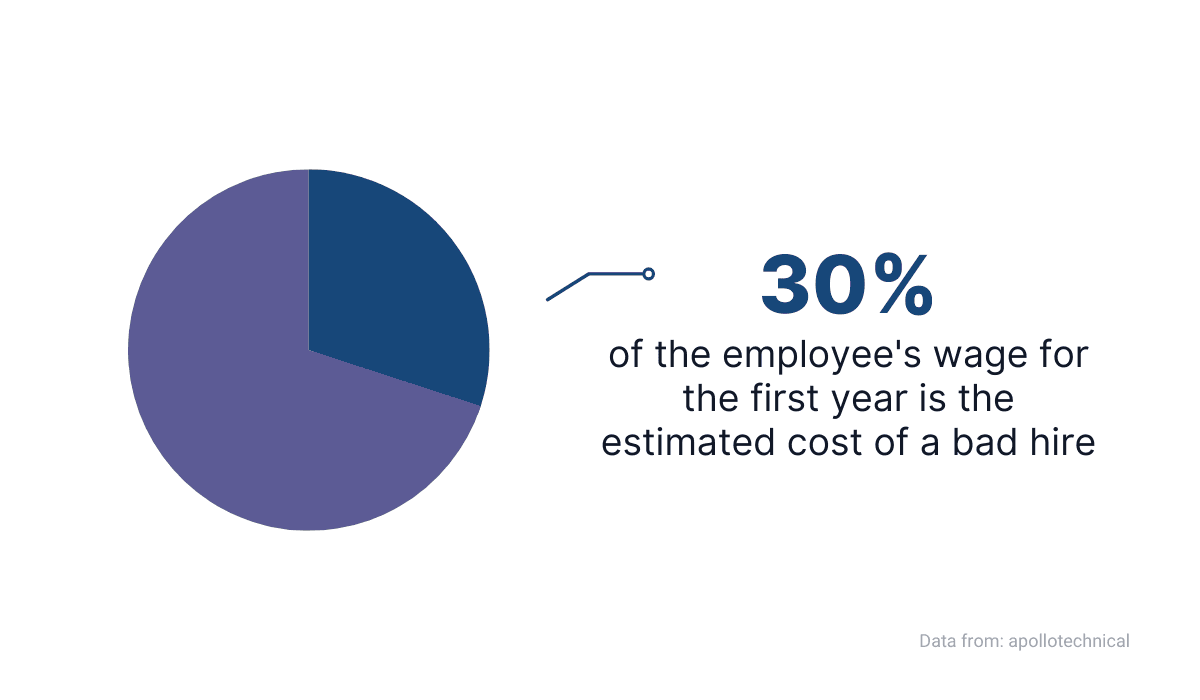
Source: Archbee
To prevent that kind of loss, you should present company values in the job description to ensure a good culture fit.
Below, you can see how CrowdStrike, a cybersecurity technology company, did it.
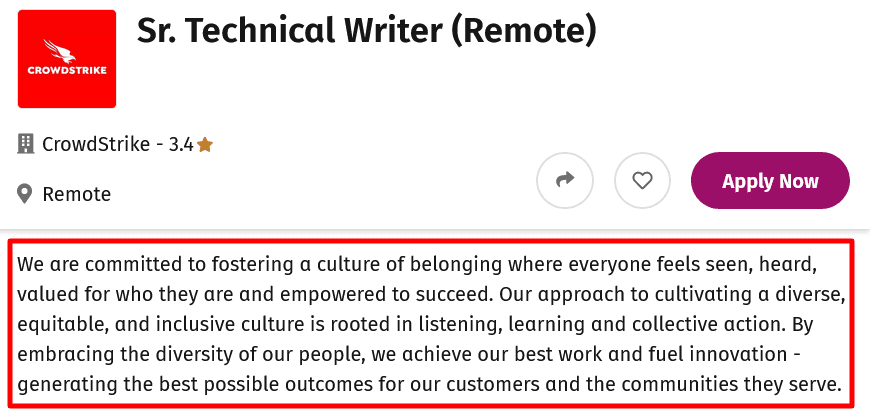
Source: simplyhired
A writer who doesn't share their values of diversity, inclusivity, learning, and innovating wouldn't fit in.
Therefore, by presenting their values in the job description, CrowdStrike reduces the chances of those candidates even applying for the job.
Another example is Robinhood, a financial services company that emphasizes its mission to democratize finance.
In other words, they create products with the aim of making the financial system available to everyone.
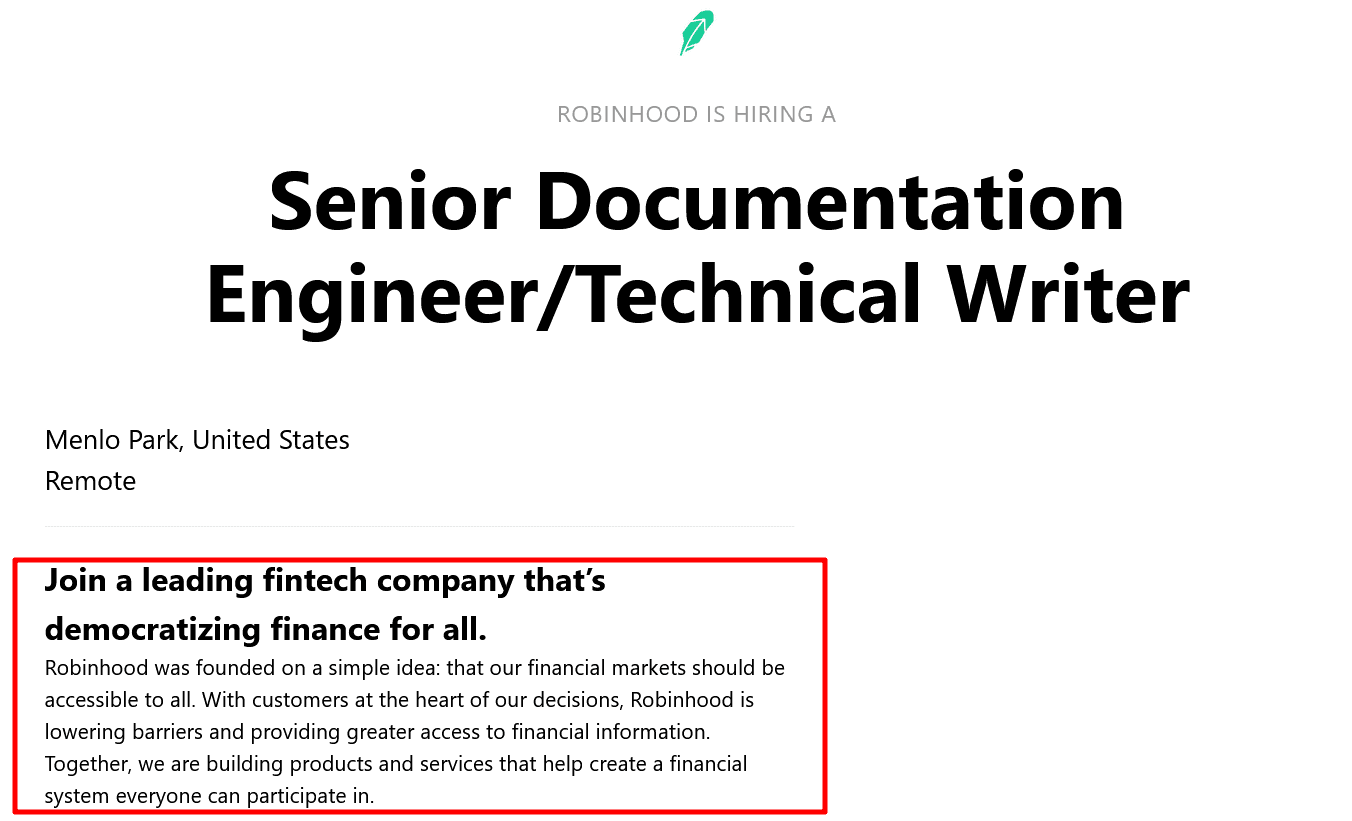
Source: startup.jobs
Therefore, they want to attract technical writers who share those values, and a great way to do that is to include a mission statement in the job description.
In short, a mission statement is a way to present to candidates what your company values in business and people. That way, you can let them decide if they would fit in.
Be Transparent About the Salary
Last but not least, an important element of your job description is information about the salary and other benefits and perks for employees.
Let’s be honest—like everyone else, technical writers want to make a living doing their job. That doesn’t mean they’re greedy or care only about the money.
Being transparent about the salary in your job description shows them that you care about their well-being as employees and have nothing to hide.
Also, you can stand out among the other postings just by showing that information.
According to a survey by Indeed, 70% of candidates never or only occasionally saw salary in the job descriptions.
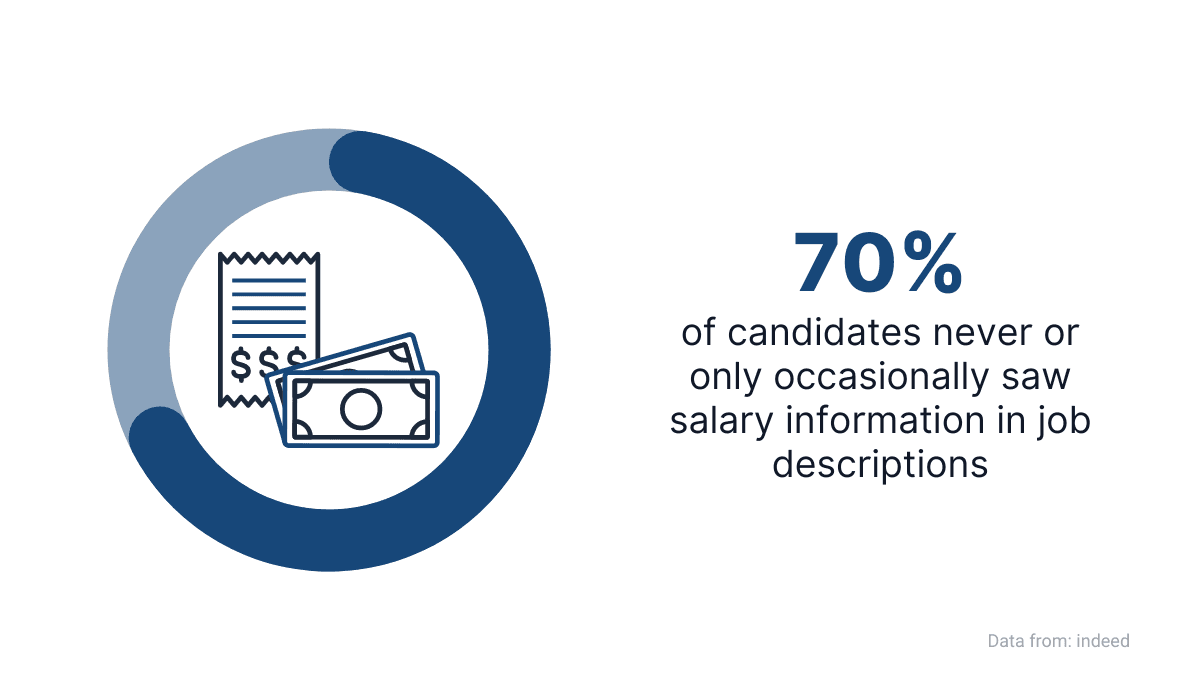
Source: Archbee.com
If you think that salary information is a nice-to-have addition and candidates care more about the other aspects of a job description we discussed until now, you’re most likely wrong.
The data indicates that salary information is actually the most important of all, according to a LinkedIn study.
Below is their heat map that shows what candidates find the most appealing.
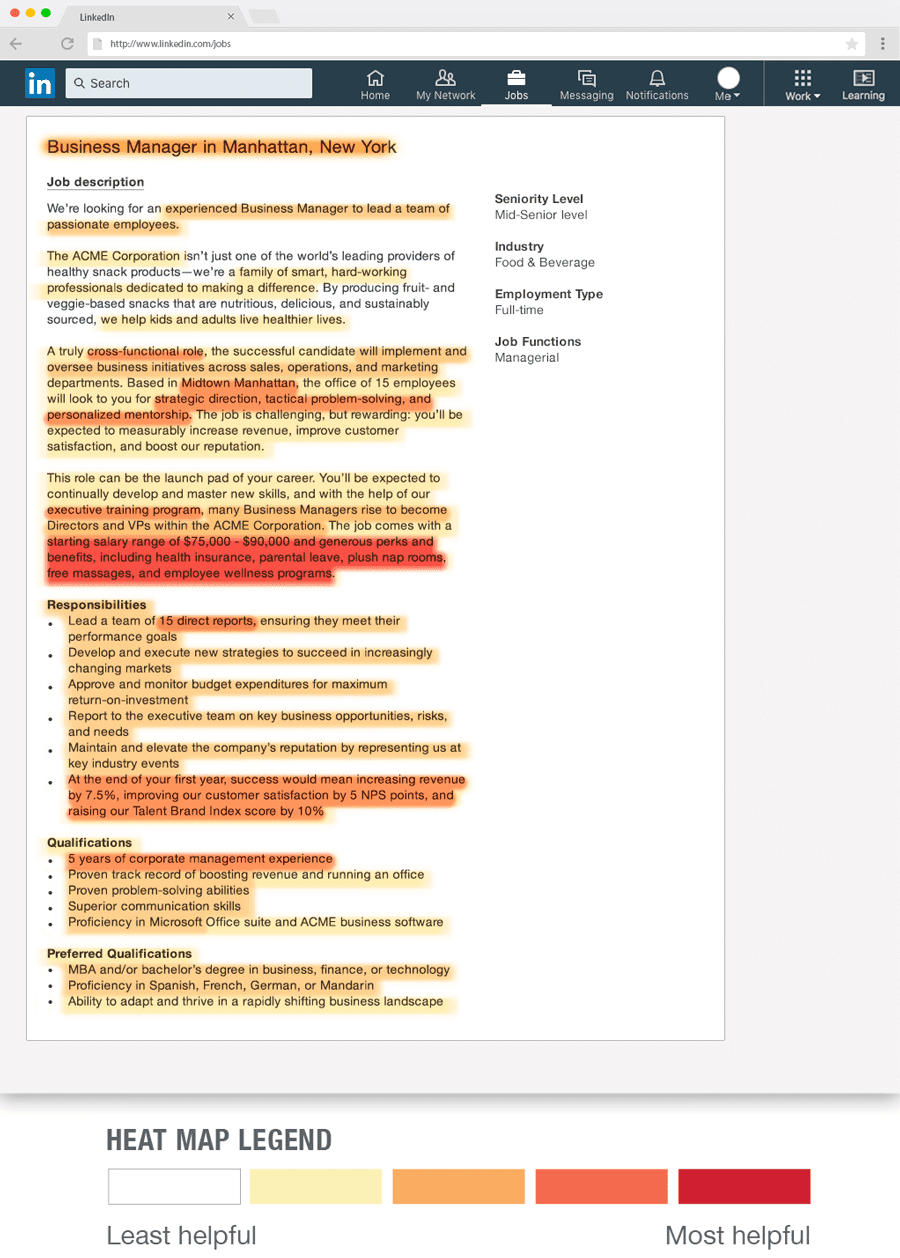
Source: LinkedIn
As you can see, there aren’t a lot of red lines. Those that are, mention the salary, benefits, and perks like health insurance, parental leave, free massages, etc.
Therefore, by being transparent about salary, you give candidates the information they find valuable while deciding whether to apply.
Even if the salary depends on experience, education, or other factors, you can display a range, as Amazon did for the job ad below.
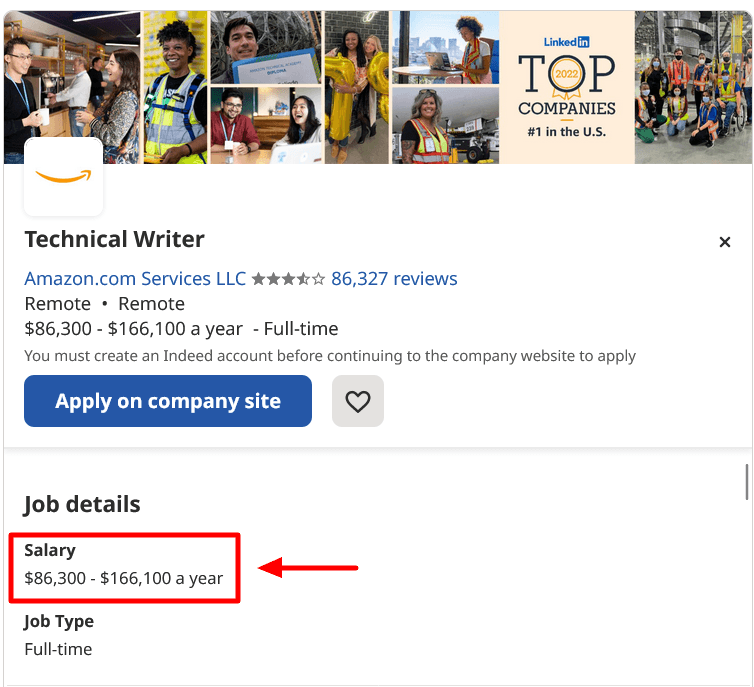
Source: Indeed
Although it’s a wide range, at least candidates have an idea about what you can offer them.
You can then clarify that in the job description and mention other benefits that you offer:

Source: Indeed
Regarding benefits and perks in addition to salary, including them can also attract candidates to your technical writer position.
Below, you can see how Live Nation did it. They created a separate bulleted list and introduced it as their six pillars of benefits which embody their motto.
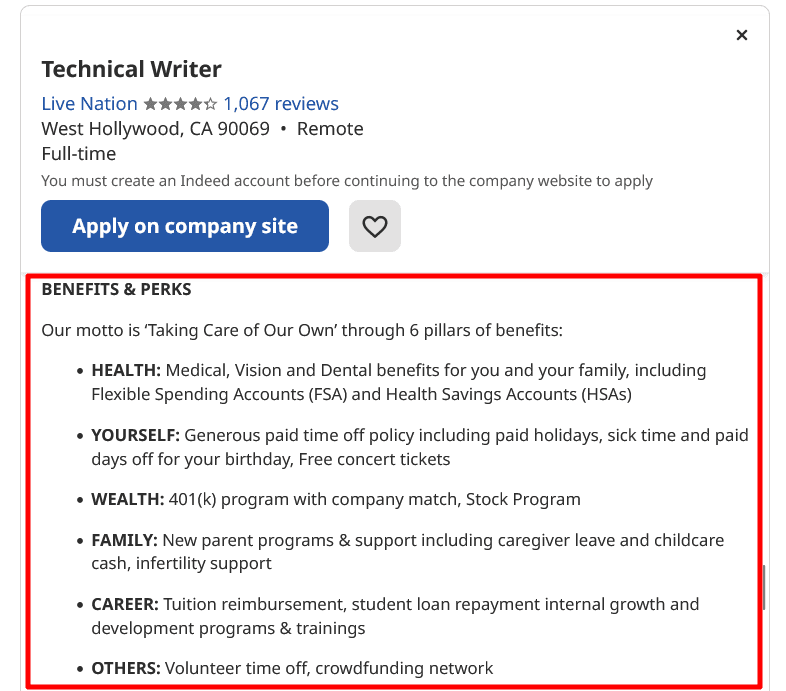
Source: Indeed
By presenting it like that, you can tie your transparency about benefits with your company’s values and culture and make a statement that would separate your job description from many similar ones.
Conclusion
A job description can be the difference between hiring a top-tier technical writer and struggling to find adequate people to fill that vital role.
If you want to attract excellent candidates, you should present the job and the company in the best possible light.
A job description with a simple job title, a summary, lists of job responsibilities and required qualifications, a mission statement, and information about salary and benefits shows that you put a lot of importance on your hiring process.
Implement what you learned from this article, and you’ll reap the benefits.
Frequently Asked Questions
Simple titles get found and understood. Candidates search with plain keywords like
Technical Writer, not playful labels.Here’s why simplicity wins:
- Search + ATS visibility: Clear, keyword-aligned titles rank better on job boards, search engines, and applicant tracking systems.
- Expectation setting: Candidates instantly know the role, level, and focus—no decoding required.
- Wider reach: Plain language is more inclusive and works across geographies and industries.
- Fewer mismatches: You’ll attract applicants who are actually qualified for what you need.
A reliable naming formula:
- Core role + level + specialty
- Examples:
Technical Writer, API Documentation,Senior Technical Writer — Developer Docs,Technical Writer II (Cloud Security)
What to avoid:
- Jargon or gimmicks like ninja, guru, or master
- Vague hybrids (e.g., Writer/PM/Engineer) unless the role truly spans those areas
- Internal-only codes or titles customers wouldn’t search for
